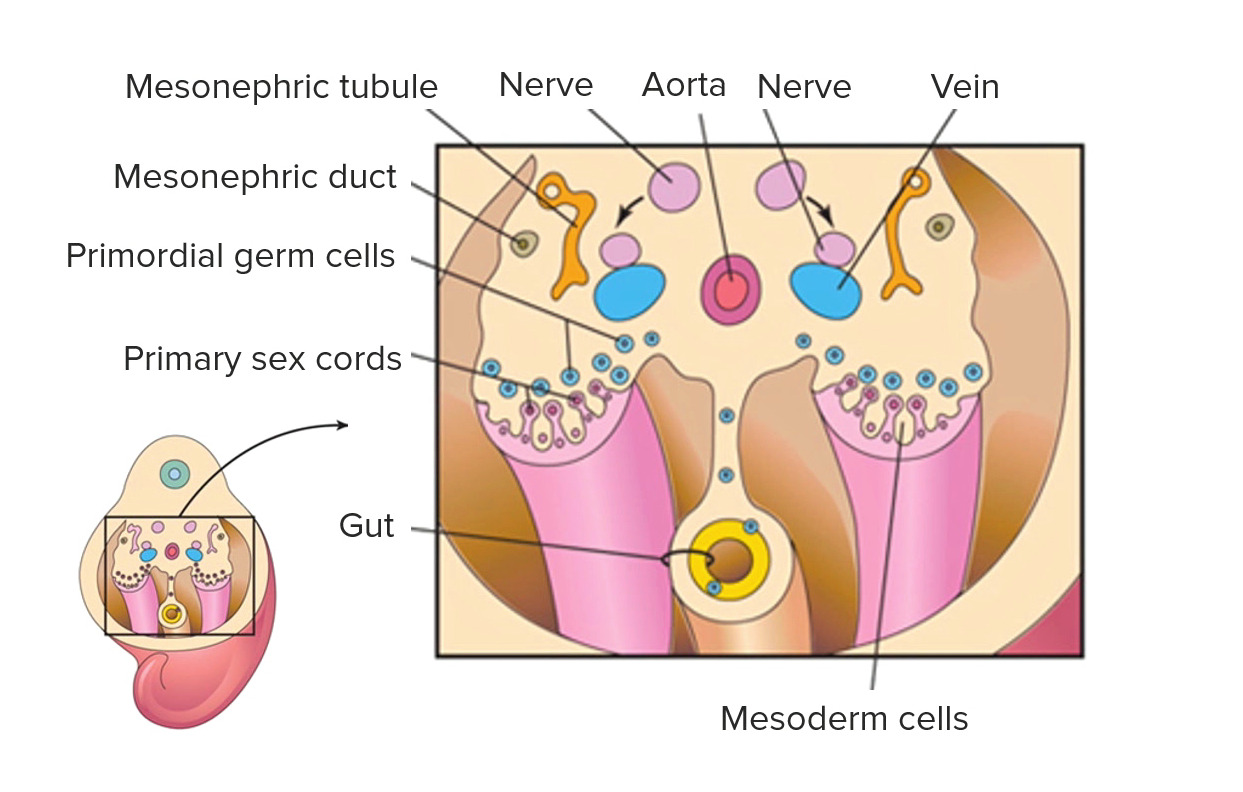Playlist
Show Playlist
Hide Playlist
Ovarian Cycle, Ovulation and Uterine Changes
-
Slides 09-60 Ovarian Cycle, Ovulation and Uterine Changes.pdf
-
Download Lecture Overview
00:01 We will now explore how the ovarian cycle responds to hormonal changes in the body and of those changes are mirrored with changes in the uterus. 00:10 So ovulation is timed very, very tightly not only to developments in the egg, but also to developments in the uterus. 00:18 Initially, these changes are driven by follicle stimulating hormone, FSH, and luteinizing hormone, LH, coming from the pituitary gland. 00:27 Follicle stimulating hormone does exactly what we think it's named what imply it would do. 00:32 It makes the follicle cells surrounding the egg a little more active and one thing that they're going to do is secrete estrogen. 00:40 So follicle stimulating hormone, as we see it making a little bump on the screen, is going to cause an increase in the level of estrogen being released by the granulosa cells surrounding the egg. 00:52 Surely thereafter, a surge in luteinizing hormone from the pituitary gland is gonna have several important effects. 00:59 First, it's gonna cause the oocyte to complete meiosis one and creating a secondary oocyte and the first polar body. 01:06 Thereafter, the secondary oocyte will begin meiosis two, but arrest in metaphase and it will not complete in metaphase or any further steps in meiosis two unless it is fertilized. 01:19 The luteinizing hormone surge is also gonna create an increased production of a new hormone called progesterone, from the granulosa cells. 01:28 And if you look at the chart, you can see that the levels of progesterone rise fairly sharply after the surge of luteinizing hormone. 01:36 The luteinizing hormone spike also causes the Graafian follicle with its large antrum to rupture, releasing the egg from the ovary, hopefully into the oviduct. 01:47 The cells that are going to be surrounding that expelled egg reorganize themselves and instead of being called the cumulus oophorus we've decided to give them yet another name, the corona radiata, and they're surrounding the glycoproteins deep to them the zona pellucida and then the oocyte. 02:06 Granulosa cells that remain in the ovary are going to form a structure called the corpus luteum or the yellow body and it will continue producing progesterone and that's what maintains the high levels of progesterone for the next few days in the menstrual cycle. 02:24 If fertilization does not occur, the corpus luteum will start to dwindle, rescind and eventually go away becoming a small little corpus albicans or whitish body within the ovary and at that point the levels of progesterone are going to drop very precipitously. 02:41 The hormonal cycle is not only affecting development of the egg but also development of the uterus itself to allow implantation to occur, should fertilization occur. 02:53 As levels of follicle stimulating hormone rise, the granulosa cells create estrogens such as estrone and 17 beta-estradiol. 03:02 These are gonna influence the basal level of the uterus to extend spiral arteries further up, extend uterine glands further up and proliferate so the basal level will then create a follicular level and the lining of the uterus will thicken appreciably. 03:19 Under the influence of luteinizing hormone and progesterone, we're going to have continued development of the uterine lining entering what's called the progestational phase or the phase that's ready to accept the fertilized egg. 03:35 If fertilization does not occur, then the levels of progesterone produced by the corpus luteum will drop. 03:43 At that point, the spiral arteries that supply the progestational uterus will spasm, close and then the follicular layer will become ischemic, die and then be shed during the menstrual phase. 03:57 Thank you very much, and we'll come back and see what happens when fertilization actually does occur.
About the Lecture
The lecture Ovarian Cycle, Ovulation and Uterine Changes by Peter Ward, PhD is from the course Conception, Implantation and Fetal Development.
Included Quiz Questions
Increased levels of follicle-stimulating hormone (FSH) result in the release of estrogens by which cell type?
- Granulosa cells
- Primary follicles
- Secondary oocytes
- Polar body
- Cumulus oophorus
If fertilization does not occur, corpus luteum dwindles to become corpus albicans, and directly leads to a drop in which of the following?
- Progesterone
- FSH
- LH
- Estrogen
- Testosterone
After the surge in luteinizing hormone, the secondary oocyte initiates the second phase of meiosis but arrests in which phase?
- Metaphase
- Prophase
- Anaphase
- Telophase
- Interphase
Customer reviews
5,0 of 5 stars
| 5 Stars |
|
1 |
| 4 Stars |
|
0 |
| 3 Stars |
|
0 |
| 2 Stars |
|
0 |
| 1 Star |
|
0 |
I highly recommend his classes, he knows how to handle the contents with great coherence and his way of explaining is impeccable




